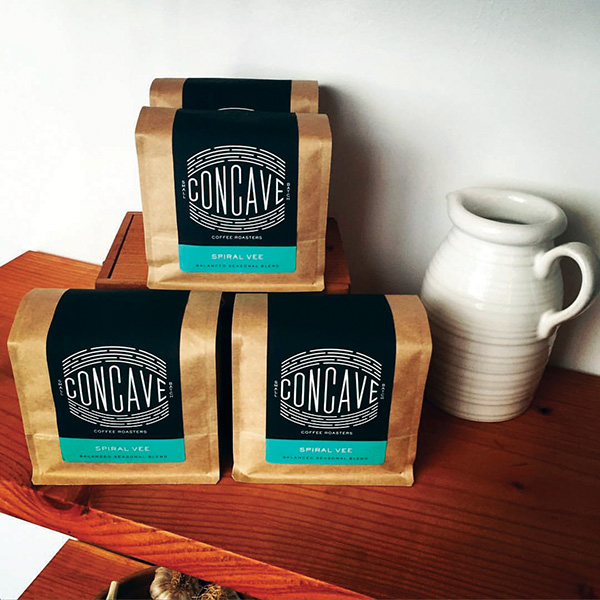Photo Courtesy of Good Spoon Foods
Riding the Wavelength
by Emily Kovach
A coffee roaster takes processed “green” beans, purchased from importers or sometimes directly from coffee farmers, and uses a combination of heat and time to coax out the best flavors possible. We asked local small-batch roaster Rick Malwitz, founder of Concave Coffee Roasters, to tell us more about the life of a roaster.
Why did you start roasting?
For the past 16 years, I’ve been a motion graphics designer and a custom surfboard shaper. Having multiple professions takes a good amount of caffeine! Curious why some coffee is better than others, I started messing around with a half-pound roaster rigged to the backyard grill.
What does a typical day look like?
I roast out of a small room in an old brewery near the art museum. The space is pretty bare bones, just enough room to fit the roaster, green bean stock and bagging table.
Right now I’m roasting weekly, mainly for wholesale clients. There’s a good amount of prep involved: gathering orders, printing labels and making sure all the green beans needed are here. The roaster is run by software that allows for consistency. After I tell the software what I want it to do, I can bag while batches are running. So it’s pretty nonstop.
What kind of machine do you use to roast and how did you find it?
The roaster is an old 10 kilogram Has Garanti that was stripped down and fully refurbished by Ambex in Florida. I was searching for something affordable to start Concave, but also large enough to keep up as production grows.
What’s your roasting style?
I tend to get the coffee into that place just after a light roast, where caramelization really gets going but before the roaster starts introducing its own flavor. There are many factors that affect coffee, like environment, temperature, humidity, how long the roaster has been running… I’m always tweaking profiles slightly to look for improvements. Subtle tweaks can make dramatic changes.
What’s the trickiest part of roasting? The most rewarding?
The whole process is tricky. It’s like a moving target. There’s rarely time to rest while roasting, though my wife joins me whenever she can, which is a huge help. The most rewarding is having clients who are genuinely proud to be supporting and serving Concave. It really is a partnership.
You build surfboards as well. Are there any similarities in the processes that you’ve noticed?
They both have a once and done process. If something goes wrong, it will have to go in the garbage. The greatest thing in common is I’ll never fully understand or stop learning about both. There’s always room for improvement, which keeps things fun and interesting.








